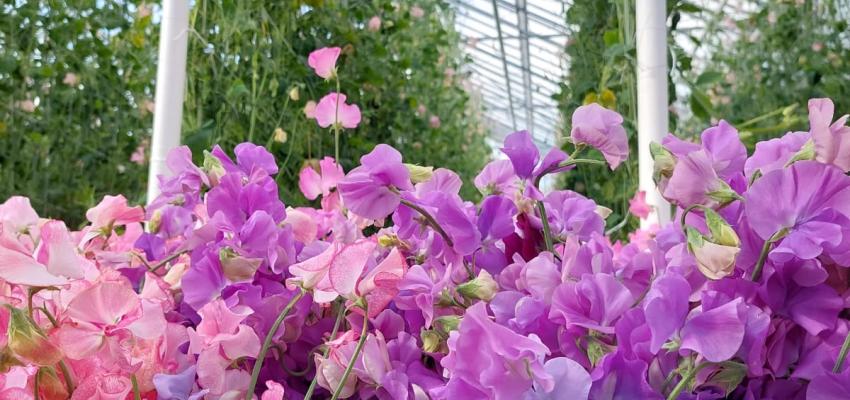
Floral design is a creative art form that combines aesthetics, color theory, and knowledge of diverse plant species. Among the myriad of beautiful flowers available to the floral designer, Lathyrus, also known as sweet peas, offers a unique charm and versatility.
Lathyrus is a genus of flowering plants that encompasses around 160 species, including annuals and perennials. The term Lathyrus comes from the Greek 'lathyros,' meaning pulse or pea, while 'odoratus,' the species name for sweet peas, translates to 'fragrant.' Recognized for their delicate, ruffled petals and sweet fragrance, these flowers have been a staple in English gardens since the 17th century.
Appearance and Varieties
Lathyrus flowers come in a variety of colors, including white, cream, pink, purple, and bicolors. The winged petals have a unique butterfly-like appearance that adds softness and whimsy to floral arrangements. The most commonly used species in floral design is Lathyrus odoratus, known for its heavenly scent and diverse color range.
Using Lathyrus in Floral Design
Lathyrus is a versatile flower suitable for a wide array of floral design applications, from formal to casual, minimalist to extravagant. The soft, cascading vines of sweet peas lend themselves beautifully to trailing bouquets, and their loose, informal growth habit makes them ideal for 'garden-style' arrangements.
Bouquets: In wedding bouquets, Lathyrus adds a romantic, vintage touch. Its lush, ruffled blossoms and trailing vines offer movement and texture, making it a favorite among brides and florists alike. Often paired with roses, ranunculus, and green foliage, Lathyrus creates a stunning effect.
Centerpieces: The sweet scent and vibrant colors of Lathyrus make them a popular choice for centerpieces. When mixed with other spring blooms, they can create a lovely, seasonally appropriate display.
Garlands and Wreaths: With their vine-like growth habit, Lathyrus is perfect for creating garlands and wreaths. These can be used for event décor, adding a touch of natural beauty to any setting.
Boutonnieres and Corsages: For a delicate and unique boutonniere or corsage, a single Lathyrus bloom, paired with a sprig of fern or eucalyptus, can make a beautiful statement.
Vase Arrangements: Sweet peas are excellent for vase arrangements, especially when paired with taller flowers like snapdragons or lilies. Their vines can drape over the edge of the vase, adding dimension to the design.
Care and handling
To ensure the longevity of cut Lathyrus in floral designs, it's crucial to follow proper care guidelines. Cut the stems at a 45-degree angle, under water if possible, to prevent air from entering the vascular system. Remove any leaves that will be below the water line, as they can decay and reduce the lifespan of the flowers. Freshly cut Lathyrus should be placed in cool, clean water, preferably with a commercial floral preservative. These steps will maximize the vase life of the Lathyrus, allowing the flowers to retain their vibrant color and intoxicating fragrance for as long as possible.